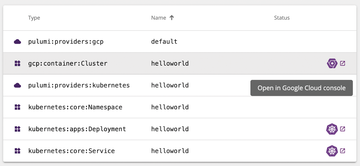« Previous 1 2 3 4 Next »
Pulumi multicloud orchestrator
Fluent
From Program to Project
What does working with Pulumi look like from the administrator's point of view? First, you need to install Pulumi, but this is not complicated: For Linux systems, the manufacturer offers a downloadable shell script [1] that you call locally. The only required binary, pulumi, is then stored in your home directory. The script automatically extends the PATH variable to include the location of the binary file.
Installing the program on other systems is a similarly relaxed experience. Pulumi is by no means Linux-specific. On macOS, it is included in the Homebrew collection [2], although the installation script for Linux that I mentioned earlier will also do the trick. For Windows, a separate installation wizard is available to help you install Pulumi on your system.
The Pulumi Service
At this point, Pulumi is almost ready for use – almost. Now you need to deal with a service that seems a bit strange at first glance: the Pulumi service app.pulumi.com, a centrally operated directory for Pulumi stacks of individual users (Figure 4). The manufacturer describes the Pulumi service as a kind of support for the administrator in managing their rolled-out setups: From here, various stack parameters can be changed or examined.
 Figure 4: The Pulumi service is a central component in the Pulumi stack and acts as a graphical control center. © Pulumi
Figure 4: The Pulumi service is a central component in the Pulumi stack and acts as a graphical control center. © Pulumi
For the open source version of Pulumi, the manufacturer assumes that the app is centrally operated by the provider and remains free for personal use by the user. If you want to use the Pulumi service commercially, license costs are incurred, which I will discuss in detail later. In the Enterprise version, it is also possible to run a separate instance of the Pulumi service locally, which is a particularly useful alternative if you do not want to pass on certain information (e.g., details of your own stacks and where they are rolled out) to third parties.
The remainder of this article assumes private use, for which Pulumi does not charge. However, you do have to create an account, because the first time pulumi new is called, the command-line tool tries to connect to the service and create a corresponding entry there. Single sign-on for Pulumi's hosted app service will work with a variety of providers; for example, you can use a GitHub account. Once the Pulumi account has been created, it's time to get started with the actual project.
First Project
In a freshly created directory, run the pulumi new <Project> command. After prompting you for the login credentials for Pulumi's App Service, a wizard launches to guide you through the most important steps of the setup and prompt you for various parameters. You can decide whether this is a project for AWS, what the credentials for the AWS account are, or in which AWS region the rollout will take place. Now, with your preferred scripting language, define the desired virtual environment such that it contains all the necessary components.
Once the project meets your requirements, the next step is deployment. The
pulumi up
command handles all the necessary steps in the background. The App Service shows that the Pulumi service is far more powerful than it seems at first glance, because it, not the Pulumi binary on the developer's host, handles the communication with the respective cloud services in the background. Detouring by way of the Pulumi app does have some advantages: If a cloud vendor changes something in their APIs, end users do not necessarily have to update their binaries to use the new features.
As soon as the deployment of a stack from within a project is finished, Pulumi shows it as active, and you can use it. If the developer made a mistake or forgot something, the stack can be pushed into a black hole with
pulumi destroy
in the project's folder. All told, the Pulumi service proves to be a helpful tool in everyday development work.
« Previous 1 2 3 4 Next »
Buy this article as PDF
(incl. VAT)
Buy ADMIN Magazine
Subscribe to our ADMIN Newsletters
Subscribe to our Linux Newsletters
Find Linux and Open Source Jobs
Most Popular
Support Our Work
ADMIN content is made possible with support from readers like you. Please consider contributing when you've found an article to be beneficial.





